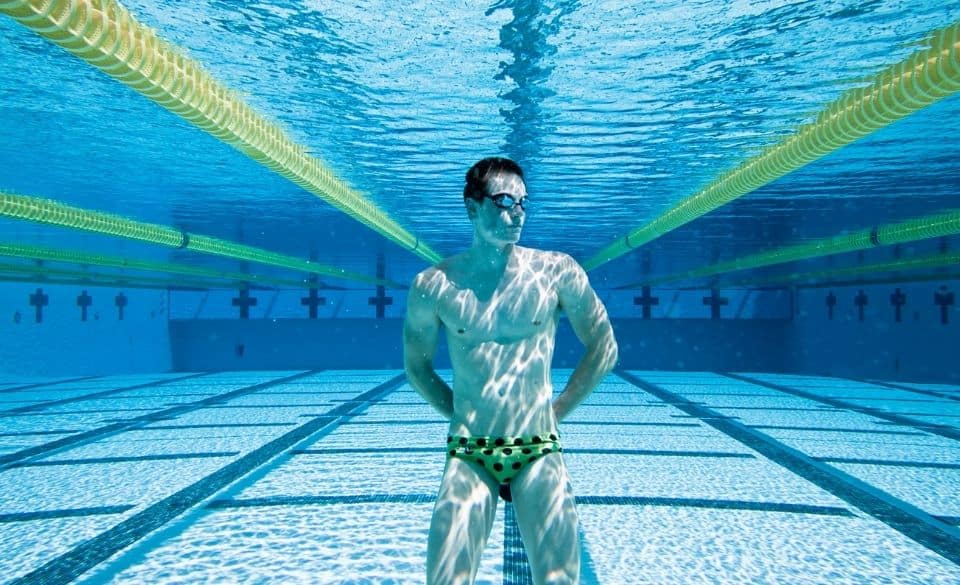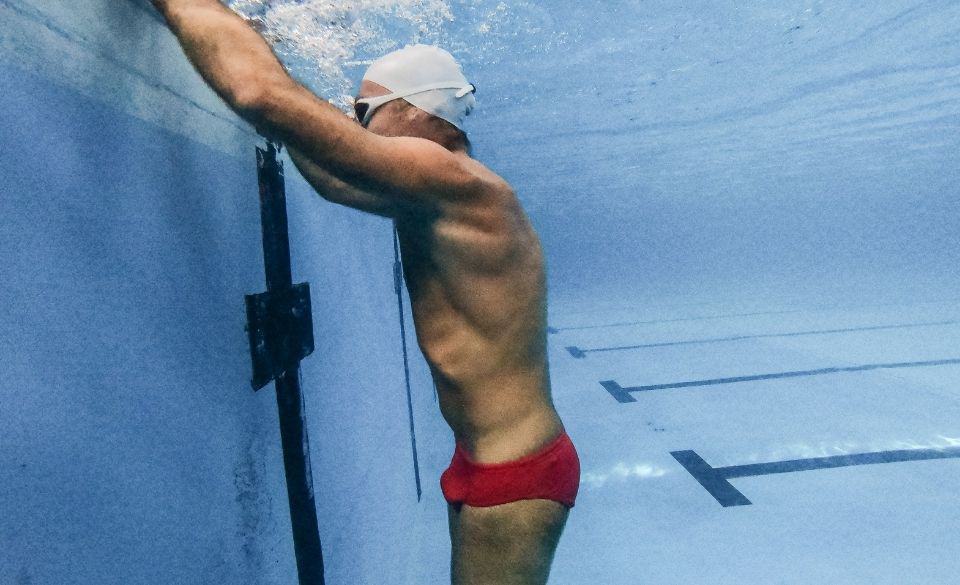
Swimming Sink Downs – Breathing Drill For Triathletes
Page Contents
Learning to exhale correctly is a necessary skill to becoming a good swimmer. However, many beginners tend to hold their breath underwater and struggle to learn how to exhale properly underwater.
Luckily if you are a triathlete learning freestyle, the swimming sink down exercise is a great addition to your swimming drills.
In this article, we look at how swimming sink downs can help improve your breathing and how you should perform this breathing exercise.
Swimming Sink Downs – A Complete Guide
If you haven’t heard of swimming sink downs before, it is an exercise that helps swimmers learn to exhale correctly underwater.
Whenever your face is submerged you need to learn to exhale constantly and smoothly through your nose or mouth (or both).
While you may think you are exhaling correctly most beginner and intermediate swimmers aren’t exhaling constantly or smoothly.
To help improve your breathing as a swimmer or triathlete, try practicing swimming sink downs the next time you head to the pool by following the exercise instructions below:
1. Go to the deep end of the pool and tread water.
2. Bring your arms above your head or to your side and take a deep breath.
3. Focus on exhaling as much as you can so the body starts to sink to the bottom of the pool. Make sure there are no pauses and you are exhaling in one deep breath.
4. Once you have exhaled all the air in the lungs, head back up to the surface.
How To Sink To The Bottom of A Pool?
Learning how to sink to the bottom of a pool is not as difficult as one imagines. The easiest way to sink to the bottom is to create a streamlined position upright in the water (placing your arms next to you or above you). Then focus on exhaling all the air out of the lungs. Naturally, once you stop kicking and exhale all the air from your lungs, you will start slowly sinking towards the bottom of the pool.
If you struggle to reach the bottom of the pool in the first few attempts, try to create a more streamlined position. Then slow down the rate that you exhale.

How To Not Float Up When Swimming Underwater?
You might be one of the few triathletes or swimmers that are positively buoyant. That means your body weighs less than the water it displaces, causing your body to rise to the surface when underwater. Unfortunately, this is a result of our body composition, and there is not much we can do about it.
Some other factors that influence how easily you float to the surface are:
– High Body Fat Percentage
– Low Muscle Mass Percentage
– Low Bone Density
So knowing this, how can we stop ourselves from floating up when underwater?
First, make sure you empty all the air out of the lungs. Secondly, try to swim deeper so that the water pressure is higher. This helps to compresses the air in your lungs, so your chest cavity displaces as much water as it normally would.
And lastly, if you still struggle to prevent yourself from floating back to the surface try using a divers belt. This will allow you to learn to exhale properly while underwater without the stress of constantly floating to the top.
Sink Down Drill – How It Helps?
The swimming sink down drill talked about in this article can help you learn how to control your exhale. This is extremely important for the triathlete or freestyle swimmer that struggles to exhale correctly underwater.
You see, after inhaling, most novice swimmers hold their breath only for one to two strokes before their next inhalation. This, unfortunately, means that they exhale very late and are often left to exhale the remainder of the air when they are supposed to inhale.
So, using the sink down drill can help you learn to control this phase of exhaling before turning your head for the next breath. It also helps you to relax more in the water, so it’s a perfect drill for beginners that tend to hold their breath too long.



